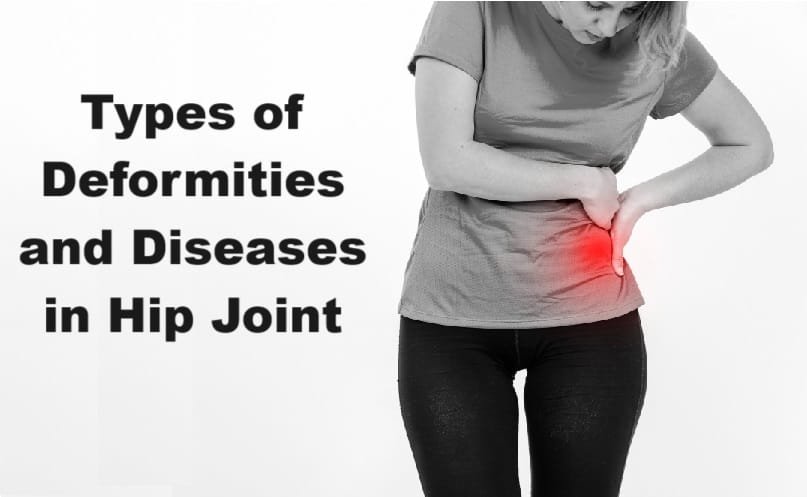The human body is the most complex and intricate system. It has many bones, veins, nerves, muscles, tendons, ligaments, etc. The following information is related to abnormalities of the hip joint. To know more, please read this article.
Hip Dysplasia
The hip is a ball-and-socket joint; technically, the ball part is called the femoral head and the socket part is the acetabulum. The femoral head sits in the acetabulum and the surrounding ligaments, tendons, and muscles stabilise them.
Under the condition of hip dysplasia, the acetabulum or hip socket part doesn’t develop properly and turns out to be too shallow, not allowing the femoral part to fit properly and leading to hip dislocation.
This condition can occur congenitally or develop during adolescence.
This condition is also known as DDH; it is short for Developmental Dysplasia of the hip.
This hip abnormality can be permanently cured with arthroplasty or a joint replacement. If you want to know the cost of a total hip replacement, visit the following link: hip replacement cost in Delhi.
Perthes Disease
The human being has a very extended network of blood vessels throughout their body to ensure blood supply to every part. Blood supply is crucial as it provides every part of our body with essential nutrients that cells need to carry out regular functions.
Thus, when the blood supply is curtailed to a particular part, cells and tissues die out of starvation. When the blood supply to the femoral head or ball part of the hip joint is blocked, it leads to necrosis or death of the healthy bone cells.
This disease when occurs results in pain, limping, and mobility issues.
Slipped Capital Femoral Epiphysis
We have discussed above that a hip joint has a ball part, medically called the femoral head, and a socket part called the acetabulum.
When, during the growth years, the ball of the femoral part slips out of place and the femoral neck remains intact, this abnormality is called slipped capital femoral epiphysis.
This is another hip-related abnormality that affects growing children.
Femoroacetabular Impingement
When both the ball and the socket of a hip joint have developed abnormally, they don’t fit together properly, rubbing against each other and causing pain, stiffness and mobility issues.
The name of this condition well suggests the location of the abnormal growth. It is called Femoroacetabular Impingement. Femoro refers to the femoral head while acetabular is to indicate the acetabulum.
Osteoarthritis
This is a degenerative disorder of the hip joint. Our hip joints are weight-bearing joints. We mobilise these joints a lot throughout the day while walking, sitting, standing, climbing stairs, etc.
But over time, these joints go through wear and tear, causing damage to the cartilage, and giving rise to joint inflammation, pain, swelling, tenderness, etc. And the worst thing is that the affected person has to face walking disabilities.
Such problems happen to old people as they have worn out their knees and hips due to years of use. The permanent solution to chronic knee and hip pain from osteoarthritis is joint replacement surgery.
If you want to learn about the recovery timeline, visit the following link: hip replacement recovery time.
Rheumatoid Arthritis
This is an autoimmune disease which causes joint inflammation. In this disorder, the immune system of a person starts attacking healthy cells, tissues and parts of the body, causing inflammation.
Thus, if you have this disorder of rheumatoid arthritis, it will cause your hip joints to get inflamed.
Septic Arthritis
Infections are rampant among humanity. They are caused by a variety of microorganisms. Some infections affect joints and give rise to septic arthritis.
Septic arthritis is a joint infection. This infection takes place in the joint cavity and the synovial fluid. Our joints like the knee and the hip are synovial joints as they contain a part called synovium, which is there to lubricate the joint and reduce the effects of friction during mobility.
Common Symptoms of septic arthritis are joint inflammation, tenderness, pain, fever and warmth. To hamper the growth of infection, a doctor offers antibiotics before proceeding with any other treatments.
Hip Fractures
Our bones might sound hard but they cannot bear intense external traumas. If you have fallen from quite some height, you will most probably end up breaking your bones like hip joints, legs, elbows, etc.
Fractures are the most common joint and bone problems among athletes and lovers of adventure sports. If a fracture to your hip joint or dislocation happens, it will cause inflammation of the hip joint, giving rise to pain and tenderness.
It will impact your mobility and hamper your daily activity.
Bursitis
The hip doesn’t just have bones. Besides the femoral head and the acetabulum, it also contains soft tissues like tendons, ligaments, synovium and finally, bursae.
A bursa is a small fluid-filled structure that provides cushioning to the surrounding structures, in addition to cartilage, to reduce the effects of friction while we mobilise the concerned joint.
External traumas like accidents or falls can cause damage to these small structures or bursae, leading to inflammation. This inflammation of the bursae is called bursitis.
Tendonitis
Tendons are strips of soft tissue that connect muscles to bones. These are like ligaments but the only difference is that a ligament only connects one bone to another.
When a tendon of your hip gets inflamed, it makes your hip joint painful and you have difficulty in walking. So, an inflammation of a tendon is called tendonitis.
People get this issue when they have injured their hip tendons severely, i.e., a tendon has ripped into two. Such cases are treated either arthroscopically or with an open extended surgical procedure.
Conclusion
These are the general problems related to the hip. If you have any of such abnormalities in your hip joints, it is bound to cause joint inflammation and mobility issues. If a hip problem has impacted your life considerably, make sure you consult an orthopedic doctor for the best solution.
Only an orthopedic specialist can offer permanent relief from a hip joint condition.




